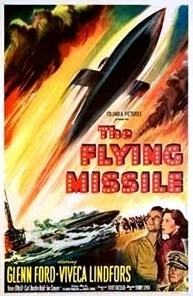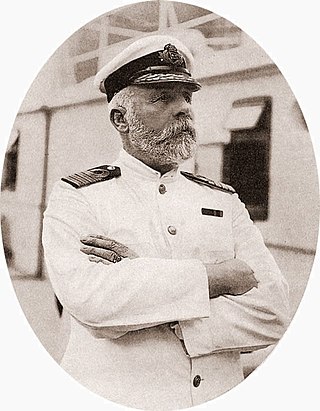
Hellcats of the Navy is a 1957 American black-and-white World War II submarine film drama from Columbia Pictures, produced by Charles H. Schneer and directed by Nathan Juran. The film stars Ronald Reagan and his wife, billed under her screen name Nancy Davis, and Arthur Franz. This was the only feature film in which the Reagans acted together, either before or after their 1952 marriage.

USS Wahoo (SS-238) was a Gato-class submarine, the first United States Navy ship to be named for the wahoo. Construction started before the U.S. entered World War II, and she was commissioned after entry. Wahoo was assigned to the Pacific theatre. She gained fame as an aggressive and highly successful submarine after Lieutenant Commander Dudley Walker "Mush" Morton became her skipper. She was sunk by Japanese aircraft in October 1943 while returning home from a patrol in the Sea of Japan.

USS Bowfin (SS/AGSS-287), is a Balao-class submarine of the United States Navy named for the bowfin fish. Since 1981, she has been open to public tours at the USS Bowfin Submarine Museum & Park in Pearl Harbor, Hawaii, next to the USS Arizona Memorial Visitor Center.

The submarine film is a subgenre of war film in which the majority of the plot revolves around a submarine below the ocean's surface. Films of this subgenre typically focus on a small but determined crew of submariners battling against enemy submarines or submarine-hunter ships, or against other problems ranging from disputes amongst the crew, threats of mutiny, life-threatening mechanical breakdowns, or the daily difficulties of living on a submarine.

It Came from Beneath the Sea is a 1955 American science fiction monster horror film from Columbia Pictures, produced by Sam Katzman and Charles Schneer, directed by Robert Gordon, that stars Kenneth Tobey, Faith Domergue, and Donald Curtis. The screenplay by George Worthing Yates was designed to showcase the stop motion animation special effects of Ray Harryhausen.

Operation Petticoat is a 1959 American World War II submarine comedy film in Eastmancolor from Universal-International, produced by Robert Arthur, directed by Blake Edwards, that stars Cary Grant and Tony Curtis.

McHale's Navy is an American sitcom starring Ernest Borgnine that aired 138 half-hour episodes over four seasons, from October 11, 1962, to April 12, 1966, on the ABC television network. The series was filmed in black and white and originated from a one-hour drama titled "Seven Against the Sea", broadcast on April 3, 1962 as part of the Alcoa Premiere anthology series. The ABC series spawned three feature films: McHale's Navy (1964); a sequel, McHale's Navy Joins the Air Force (1965); and a 1997 sequel-remake of the original series.

Operation Pacific is a 1951 black-and-white World War II submarine war drama from Warner Bros. Pictures, produced by Louis Edelman, and written as well as directed by George Waggner. John Wayne and Patricia Neal star and Ward Bond and Philip Carey play supporting roles.

Charles Andrews Lockwood was a vice-admiral and flag officer of the United States Navy. He is known in submarine history as the commander of Submarine Force Pacific Fleet during World War II. He devised tactics for the effective use of submarines, making the members and elements of "silent service" key players in the Pacific victory.

The Decima Flottiglia MAS was an Italian flotilla, with commando frogman unit, of the Regia Marina created during the Fascist regime.

I-401 was an Imperial Japanese Navy Sentoku-type submarine commissioned in 1945 for service in World War II. Capable of carrying three two-seat Aichi M6A1 "Seiran" float-equipped torpedo bombers, the Sentoku-class submarines were built to launch a surprise air strike against the Panama Canal. Until 1965, the Sentaku-type submarines — I-401 and her sister ships I-400 and I-402 — were the largest submarines ever commissioned.

The Hunt for Red October is a 1990 American submarine spy thriller film directed by John McTiernan, produced by Mace Neufeld, and starring Sean Connery, Alec Baldwin, Scott Glenn, James Earl Jones, and Sam Neill. The film is an adaptation of Tom Clancy's 1984 bestselling novel of the same name. It is the first installment of the film series with the protagonist Jack Ryan.

USS Hayter (DE-212/APD-80) was a Buckley-class destroyer escort in service with the United States Navy from 1943 to 1946. In 1967, she was transferred to South Korea where she served as ROKS Jonnam until 1986.

HMS G9 was a G-class submarine, one of eight Royal Navy submarines known to have been lost to friendly fire in World War I.

Submarine Command is a 1951 American war film directed by John Farrow and starring William Holden, Don Taylor, Nancy Olson, William Bendix, and Darryl Hickman. It is notable for being one of the first films to touch on post traumatic stress disorder. Holden invested $20,000 of his own money into the film. The film received a mixed reception: it was panned by some critics for its brooding melodrama whilst being praised by others.

The Raid on Cuxhaven was a British ship-based air-raid on the Imperial German Navy at Cuxhaven mounted on Christmas Day, 1914.

The Flying Missile is a 1950 black-and-white Cold War era Columbia Pictures film starring Glenn Ford and Viveca Lindfors. Made with the cooperation of the US Navy, it tells a fictionalized story of the then recently revealed story of the US Navy's first mounting and firing submarine-launched cruise missiles such as the Republic-Ford JB-2 Loon off the deck of submarines.

"The captain goes down with the ship" is a maritime tradition that a sea captain holds the ultimate responsibility for both the ship and everyone embarked on it, and in an emergency they will devote their time to save those on board or die trying. Although often connected to the sinking of RMS Titanic in 1912 and its captain, Edward Smith, the tradition precedes Titanic by several years. In most instances, captains forgo their own rapid departure of a ship in distress, and concentrate instead on saving other people. It often results in either the death or belated rescue of the captain as the last person on board.
I-41 was an Imperial Japanese Navy B2 type submarine. She was completed at Kure Navy Yard on 18 September 1943, whereupon she entered into service with the Imperial Japanese Navy Yokosuka Naval District, SubRon 11, and sailed to Yokosuka for final trials under the command of Lt. Commander Tamori Yoshimatsu. This was completed by 15 December 1943 and command was transferred to Lt. Commander Itakura Mitsuma. I-41 was reassigned to the Sixth Fleet in SubRon 1's Sub Division 15.

HMS Sunflower was a Flower-class corvette of the Royal Navy. She served during the Second World War.



















